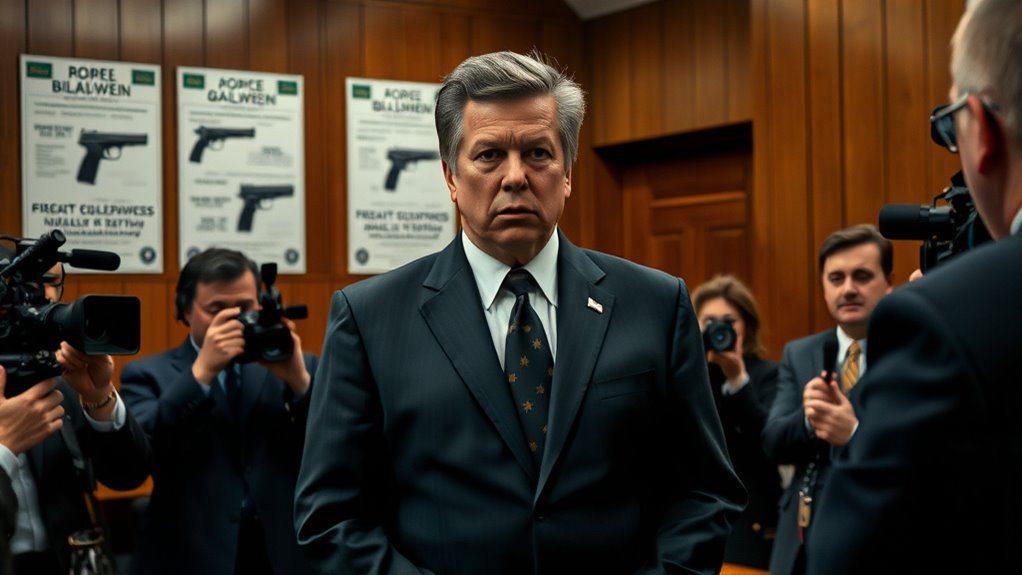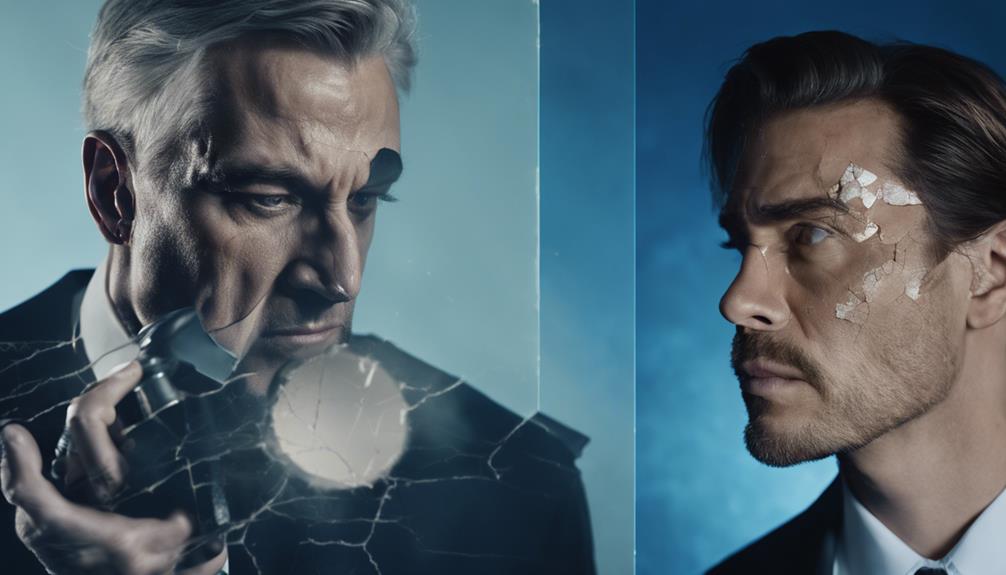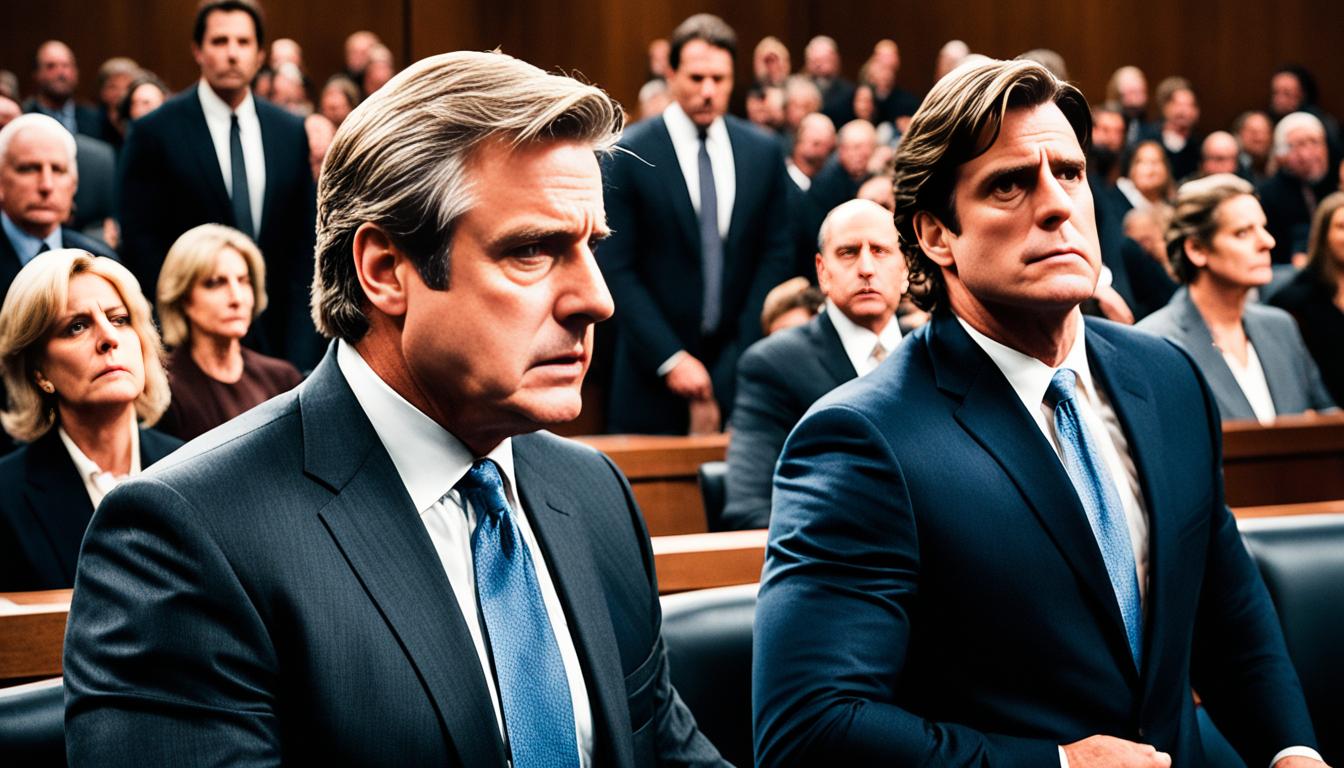The “Rust” shooting case raises questions about criminal liability, firearm safety protocols, and prosecutorial transparency. Alec Baldwin’s charges were ultimately dropped, but legal battles highlighted the difficulty in proving intent and ensuring accountability. Industry safety standards were also scrutinized, leading to reforms like stricter firearm regulations and safety training. If you want to understand the legal complexities and the industry’s efforts to prevent such tragedies, more details are available.
Key Takeaways
- The case raised questions about criminal intent and evidence disclosure, leading to Baldwin’s charges being dismissed and highlighting legal transparency issues.
- Industry safety violations, including failure to consult weapons specialists, resulted in fines and prompted calls for stricter firearm safety protocols.
- Civil lawsuits against producers underscored the emotional and financial impact of workplace negligence, leading to settlements.
- The incident spurred industry-wide safety reforms, including enhanced training and stricter adherence to firearm safety standards.
- Legal challenges such as prosecutor resignations and procedural hurdles reveal complexities in criminal and civil justice processes.

The fatal shooting on the set of “Rust” has sparked a wave of legal questions and industry reforms. As someone following this case, you might wonder about the legal responsibilities involved and how the industry is responding to prevent future tragedies. Alec Baldwin and armorer Hannah Gutierrez-Reed faced involuntary manslaughter charges early in 2023, highlighting the seriousness of firearm safety on set. However, charges against Baldwin were eventually dismissed after prosecutors were found to have withheld evidence, raising concerns about prosecutorial transparency. A special prosecutor involved in the case resigned before charges were dropped, illustrating the complex legal challenges faced by all parties. Ultimately, in late 2024, the state withdrew its appeal, confirming Baldwin did not commit a crime. This resolution underscores the difficulties in proving criminal intent in such incidents, even amidst widespread industry scrutiny.
Beyond criminal charges, the incident exposed significant occupational safety violations. The New Mexico Occupational Health and Safety Bureau fined Rust Movie Productions over $136,000 for firearms safety breaches. One major lapse was the failure to consult with on-set weapons specialists before handing Baldwin a loaded gun, directly violating union safety protocols designed to prevent accidents. Despite previous accidental discharges on the set, assistant director David Halls ignored safety warnings and failed to implement corrective measures. The fine was later reduced to $100,000 after the producers settled with OSHA, but the incident revealed the industry’s lax enforcement of firearm safety standards. Your awareness of these violations underscores the importance of strict safety protocols and consistent enforcement to protect cast and crew.
The Rust set’s firearm safety violations highlight the urgent need for strict protocols and enforcement.
Civil litigation also played a significant role. Three crew members filed a lawsuit claiming negligence caused emotional distress, accusing producers of neglecting safety procedures. Baldwin, as a co-producer, denied these allegations, but the parties reached an undisclosed settlement in 2025, ending the suit. This case brought broader attention to the emotional and financial toll of workplace accidents, emphasizing that safety failures can lead to costly legal consequences. You might see this as a push for greater accountability and protective measures for industry workers.
The incident prompted a reevaluation of union safety standards, especially those related to firearm handling. While unions like IATSE, Actors Equity, and SAG have rules similar to industry best practices, enforcement was insufficient on “Rust.” The tragedy sparked calls for enhanced training, stricter compliance, and better overall safety culture. Industry-wide education initiatives now prioritize firearm safety for all crew members and actors, aiming to prevent similar incidents. You can interpret this as a positive step toward stronger safety norms and a more responsible industry.
Lastly, the case’s legal complexity, marked by prosecutor resignations and procedural hurdles, reflects how difficult it is to navigate criminal and civil justice in high-profile incidents. The battles over evidence disclosure and the legal process highlight the need for transparency and accountability. As you follow this case, it’s clear that the “Rust” shooting has prompted widespread reflection on safety, responsibility, and justice within the film industry.
Frequently Asked Questions
What Safety Protocols Were in Place on the Set?
You want to know what safety protocols were in place on set. Industry standards required the property master or armorer to work with safety reps, conduct gun inspections, and clearly communicate firearm status, like “cold gun.” Only trained personnel should handle firearms, with strict separation from live ammo. Crew must be informed and trained, and safety checks should be enforced. Unfortunately, on Rust, many of these protocols weren’t effectively followed or enforced.
How Did the Firearm Accident Occur Despite Safety Measures?
You wonder how the accident happened despite safety measures. The main issue is that protocols were ignored or broken: the assistant director handed Baldwin a gun declared safe without verifying with the armorer, and live rounds were present, violating industry standards. Safety checks failed, and previous incidents weren’t addressed. These failures created a dangerous environment, leading to the tragic discharge and highlighting systemic safety lapses on set.
Are There Precedent Cases Similar to This Incident?
Imagine walking through a minefield where one wrong step can be deadly. In Hollywood, precedent cases like Brandon Lee’s tragic death and Jon-Erik Hexum’s self-inflicted wound serve as cautionary tales. Unlike these, the “Rust” incident led to criminal charges, making it a rare storm in a sea of mostly civil and safety violations. These cases highlight how unpredictable and dangerous on-set firearm mishaps can be, even with safety protocols in place.
What Are the Potential Legal Consequences for Involved Parties?
You might wonder about the legal consequences for those involved. If you’re in this situation, you could face criminal charges like involuntary manslaughter, as seen with Hannah Gutierrez-Reed, or civil liabilities from lawsuits. Prosecutors may pursue negligence claims, and industry reforms could increase safety regulations. Even if charges are dismissed, individuals could still be held accountable through civil cases, fines, or reputational damage, emphasizing the importance of safety and legal compliance.
How Will Industry Reforms Prevent Future Firearm Accidents?
You wonder how reforms prevent future firearm accidents. These measures require you to follow strict safety standards, including mandatory training, proper permits, and clear protocols for handling weapons. They also mandate detailed risk assessments and independent safety oversight, which help identify hazards early. By professionalizing firearm management and enforcing compliance, these reforms create safer film sets, reducing the chances of mistakes that could lead to accidents.
Conclusion
As you consider this case, remember that nearly 70% of industry insiders believe safety reforms could prevent future tragedies. The Alec Baldwin ‘Rust’ shooting highlights vital legal questions about gun safety and liability. By advocating for stricter protocols and clearer regulations, you can help push meaningful change in the industry. Addressing these issues now isn’t just necessary—it’s essential to protect lives and guarantee accountability in film production.











